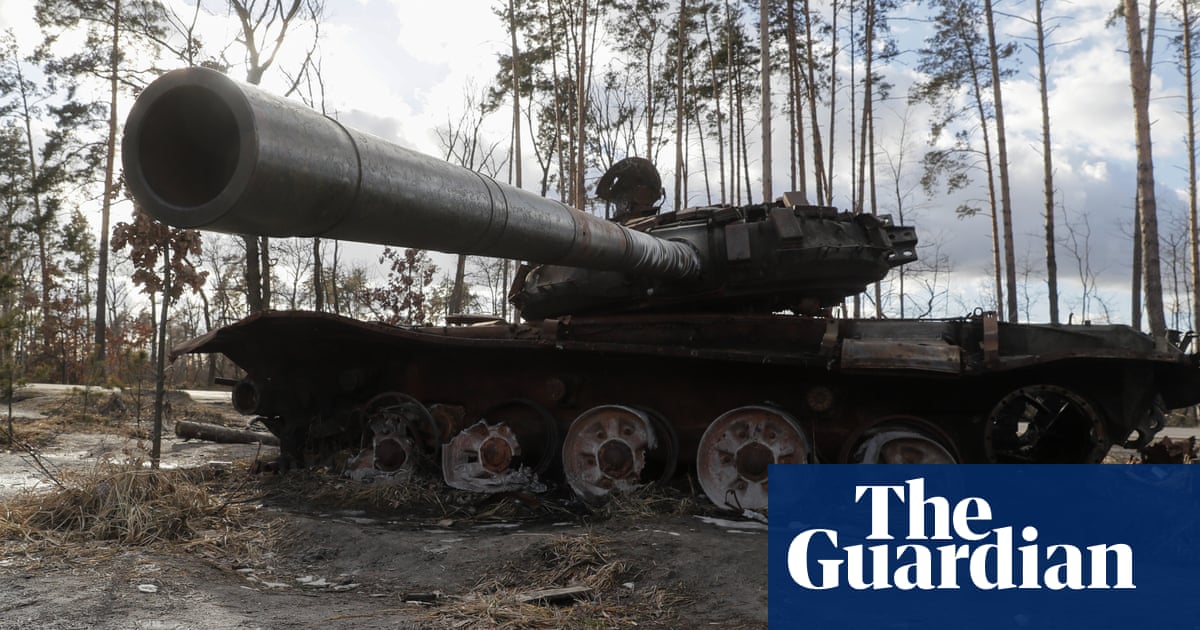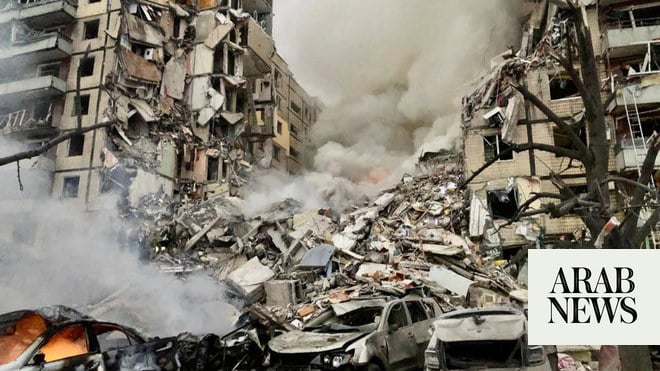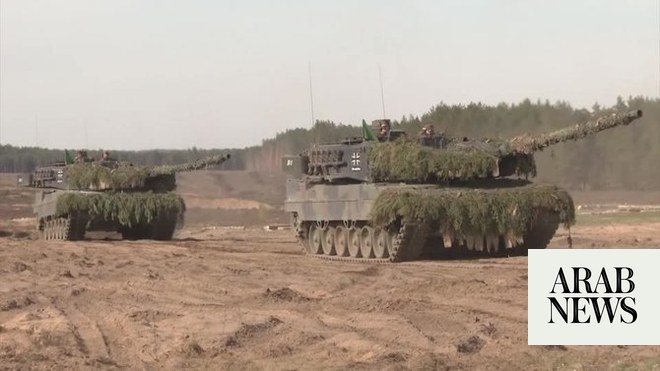
Russia’s army is estimated to have lost nearly 40% of its prewar fleet of tanks after nine months of fighting in Ukraine, according to a count by the specialist thinktank the International Institute of Strategic Studies (IISS).
That rises to as much as 50% for some of the key tanks used in combat, forcing Russia to reach into its still sizeable cold war-era stocks. Ukraine’s tank numbers are estimated to have increased because of the number it has captured and supplies of Soviet-era tanks from its western allies.
John Chipman, the thinktank’s chair, said the war had been “a political and military failure for Russia” highlighting shortcomings in leadership and deficiencies in its munitions, despite Kremlin modernisation efforts.
“Russia’s actions over the past year have raised questions not only over the competence of its military and senior military leadership, but also over command cohesion,” he said, launching the IISS’s annual Military Balance audit of the world’s armed forces.
The thinktank’s figures are based largely on open source images from drones, satellites and on the battlefield, running from the beginning of the war to the end of November, although the conflict means numbers can only be estimated.
Its headline count is that Russia’s number of tanks in its army have reduced by 38% from 2,927 to 1,800, while there have been particularly heavy losses of its workhorse T-72B3, an upgrade first delivered to its army in 2013.
Heavy losses on the battlefield have meant that Russia had lost “around 50% of its pre invasion fleet” of the tank and a related variant, Chipman said, and slow industrial production was “forcing Moscow to rely on its older stored weapons as attrition replacements”.
Russian overoptimism meant that it suffered heavy tank losses at the beginning of the war, particularly in the abortive attack on Kyiv, where large numbers of tanks and armoured vehicles moving in a convoy were destroyed on roads north of the capital. Many others were captured or towed off by tractors as the assault failed.
Russian troops had anticipated being welcomed in Ukraine, and in some cases carried parade dress in the belief that after a blitzkrieg, the tanks would be used to stage a parade in Kyiv’s streets. Instead, they were picked off by Ukrainian artillery and infantry using anti-tank weapons.
There has been little sign of an improvement in tank tactics, with several dozen tanks estimated to have been lost in fighting since late January in a so far unsuccessful attempt to seize the Donbas town of Vuhledar. By using reconnaissance drones, Ukraine has been able knock out tanks with its artillery.
But, while the battlefield losses are notable, Russia retains a large number of old tanks in long-term storage, currently estimated at 5,000, meaning Moscow can continue to pursue an attritional strategy for some time to come.
Ukraine, however, has seen its tank count go up to 953 from 858 because it has partly offset its own losses by capturing an estimated 500 from Russia, of which it has “pressed a fair amount into service”, according to the IISS analyst Henry Boyd. It has also had significant donations from Poland, the Czech Republic and other states with Soviet-era armour, but its tank force is currently still half the size of Russia’s.
Kyiv is hoping to receive a wave of western tanks and fighting vehicles over the next couple of months, which it plans to use to achieve a battlefield breakthrough. German defence minister Boris Pistorius however cautioned on Wednesday it so far only has “half a battalion” of Leopard 2 tanks to send to Ukraine, 14 newer A6 type Leopard tanks in addition to three from Portugal.
Poland has also committed to sending a battalion of Leopard 2 tanks to Kyiv and is currently training Ukrainian troops to use them but Pistorius said “many” were not fit for battle.
Ben Barry, a land warfare analyst, said he reckoned Ukraine would ultimately receive about a quarter of the 1,000 tanks and fighting vehicles it had sought.
That might give it “tactical advantage”, Barry said, if accompanied by enough ammunition and spare parts. Even so, the analyst and former tank commander said, it was not clear “that Kyiv has enough combat power to rapidly eject Russian forces”.
Barry concluded that, as a result, “we can expect another bloody year” in which the fighting would be unpredictable – after a period in which it is estimated that least 200,000 people have been killed or wounded on both sides.












